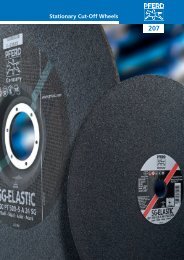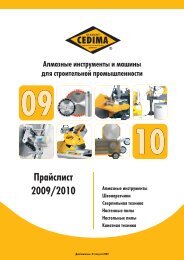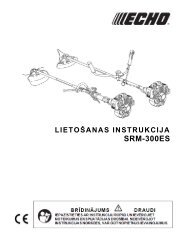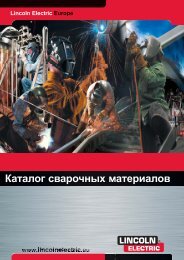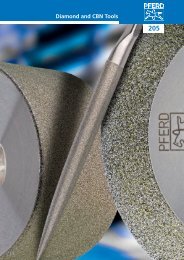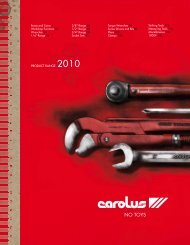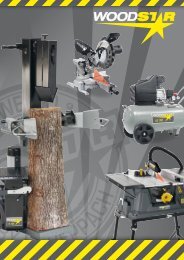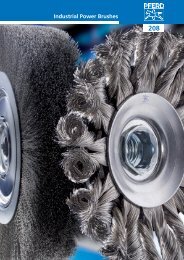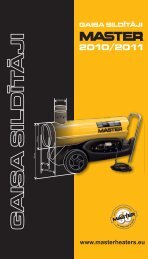for Safer Welding
for Safer Welding
for Safer Welding
- No tags were found...
You also want an ePaper? Increase the reach of your titles
YUMPU automatically turns print PDFs into web optimized ePapers that Google loves.
16Respiratory protectionPersonal protection<strong>for</strong> weldersObviously, good general ventilation is required <strong>for</strong> all workingenvironments. To contain welding fumes, the two mostcommon methods are local exhaust ventilation and “on-gun,fume-extractors.” It can be hard and time consuming to usethis kind of equipment so that you get the correct protection.All fume extractors can, regrettably, also remove valuableshielding gases, tempting the welder to turn down theventilation.Given the potential limitations of ventilation systems, itmay be necessary to use personal respiratory protectionto complement the exhaust systems to reduce exposure tocontaminants to the lowest achievable level.The multiple benefitsof personal respiratory protection• Products provide nominal protection factor up to 50• Improved worker com<strong>for</strong>t: a cool, refreshing atmospherewithin the helmet• Integrated protectionHow many grams of fume particles do youingest every year?To protect welders, safety authorities in each country haveset Occupational Exposure Limits (OELs) <strong>for</strong> specific fumepollutants. Un<strong>for</strong>tunately, these “upper limits” may stillexpose the everyday welder to certain levels of contamination.For example, if the combined OELs <strong>for</strong> a work area are5 mg/m³ or higher, you could inhale 11 grams or more ofwelding particles every year.*Protection factorsindicates pollutant reductionThe EN standards specifies the minimum per<strong>for</strong>mancerequirements a product must meet. Respirators are alsoclassified by the protection factor they provide. The protectionfactor of the respirator indicates how much the pollutant isreduced (or filtered from the air) be<strong>for</strong>e it reaches the user.For example:A manufacturer of galvanised fences measures 30 mg/m 3 ofzinc oxide in the workplace air. The Occupational ExposureLimit (OEL) is only 5 mg/m 3 . The airborne zinc oxideexposure to the welder, there<strong>for</strong>e, must be reduced by at leasta factor of 6 (30 mg/m 3 divided by 6 = 5 mg/m 3 ). A respiratorwith a minimum protection factor of 10 is required.*) Under normal working conditions the respiratory rate is about 20 litres of air/minute. Over a working year (100%), a welder inhales about 2 300 m³ of air. Underworking conditions with 5 mg/m³ of welding particles in the air, a welder inhales 11grams of particles/year.



